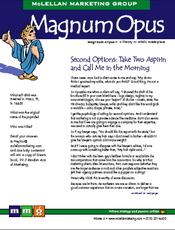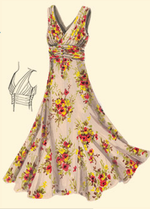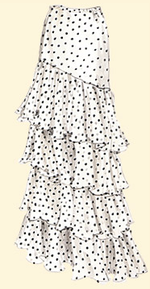How to write an outstanding blog post
August 4, 2007
 Late this Spring, Liz Strauss tagged me, asking what makes an outstanding blog post and I've been letting my answer cook until now. Which is a fancy way of saying…I'm finally getting to it.
Late this Spring, Liz Strauss tagged me, asking what makes an outstanding blog post and I've been letting my answer cook until now. Which is a fancy way of saying…I'm finally getting to it.
Maybe it took me this long because I'm not sure I have the answer for this one. Honestly, some of the posts that I still love the most and touch my heart are ones that you hardly noticed. And sometimes a post that I think is just okay draws a huge response.
So clearly, I haven't a clue.
But…I have recognized some patterns. Maybe there's a hint or two in them for all of us.
It's all about you.
The best blog posts are reader centric. They respect your intelligence, your time and your need for something fresh and different. Rather than being intent on teaching you something new, they are intent on generating a conversation by acknowledging that we both have something to say on the subject, whatever it may be.
It's not all about you.
When I first started blogging, I fully intended to offer tips and commentary on the world of marketing and branding. I didn't plan to share or show you my heart. After all, this is a business blog. But, I discovered that when you write every day, you can't really avoid that. And that's when people beyond my parents and my employees started reading my blog. So, while it can mostly be about you. It actually has to be about me too. Sort of like a conversation perhaps?
I'm not you.
Some days, I find the blogosphere pretty intimidating. I read all these smart and insightful things and wonder…what the heck am I doing at this party? Thank God I am smart enough to know that I will never be as sassy as CK or as poetic as Gavin or eloquent as Liz or helpful as Mike or inspiring as Christine or as prolific as Lewis. My blog is never going to look like David's or have a subscription list like John's. I can't draw like Tony, share wry observations like Cam or connect people like Phil. And I sure can't cuss like Paul. And that just scratches the surface of the bloggers I admire and wish I could be more like.
And to try would only serve to embarrass myself. Like it or not, I've got to work with my talents or you'd recognize me as a fake and rightfully call me on it. So I offer up what I've learned over the years, in my own native voice and hope that it will resonate with you.
I only come back because of you.
Talking to myself every day would bore me to tears. I love to write but I really love the conversation. I think the biggest tragedy of blogging is that most people read the posts and never dig into the comments. That' s where the real meat is. I can serve up a topic but I promise you, the real "a ha" comes in the interaction below the surface of the original post.
So back to Liz' question. What makes a great post?
I think, for me anyway, my posts stretch towards greatness when I draw the outline of the picture and then you color it in. When I don't know all the answers, but I have a pretty good idea of the questions. When I don't think too long or too hard, but instead just toss it out there. When I don't worry about how pretty the words sound, but instead enjoy your words. My best posts are when I look around the room, marvel at the interesting people gathered and just pull up a chair.
So in the end…it seems that what makes an outstanding post for me….is you.
How about you? If you're a blogger – how/when do you create an outstanding post? And if you're a reader, what makes a post noteworthy to you?
More
![Reblog this post [with Zemanta]](http://img.zemanta.com/reblog_e.png?x-id=411d8d5c-5a91-4ed5-8a5b-2efc71e6ea48)

![Reblog this post [with Zemanta]](http://img.zemanta.com/reblog_e.png?x-id=0f880284-c919-438e-a118-cb2d05095e82)

![Reblog this post [with Zemanta]](http://img.zemanta.com/reblog_e.png?x-id=9d297d77-8ea1-401c-b6da-899aa94d68a9)

![Reblog this post [with Zemanta]](http://img.zemanta.com/reblog_e.png?x-id=651dd6a2-5b68-45ed-985f-18bcae98d350)


![Reblog this post [with Zemanta]](http://img.zemanta.com/reblog_e.png?x-id=cd08908b-c9dc-4c38-a633-118b479211d1)

![Reblog this post [with Zemanta]](http://img.zemanta.com/reblog_e.png?x-id=8f33b9f5-c1e1-4513-8d21-a9e18984189e)
![Reblog this post [with Zemanta]](http://img.zemanta.com/reblog_e.png?x-id=6c246759-92b7-49a7-803f-9cf6ca6cfdb4)

![Reblog this post [with Zemanta]](http://img.zemanta.com/reblog_e.png?x-id=9cc191e3-9c18-4ca9-ba28-82e9bd4567a1)

![Reblog this post [with Zemanta]](http://img.zemanta.com/reblog_e.png?x-id=7a278827-00ca-450d-8c91-80aec3efff62)

![Reblog this post [with Zemanta]](http://img.zemanta.com/reblog_e.png?x-id=132dccde-9041-4dcd-b16d-d20a7a0ba5d4)